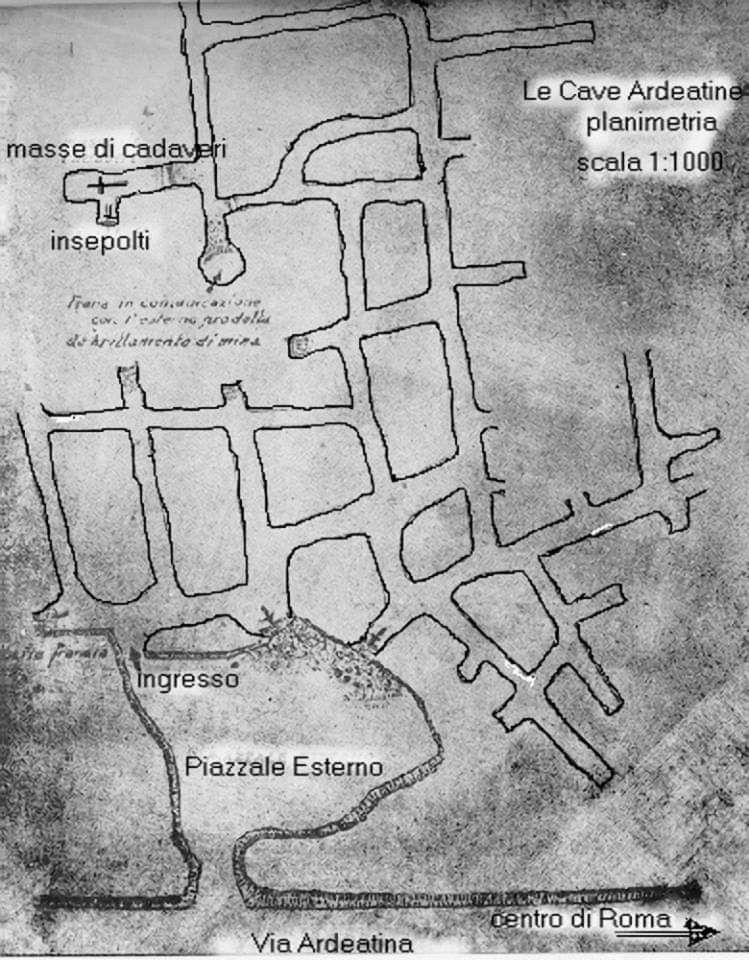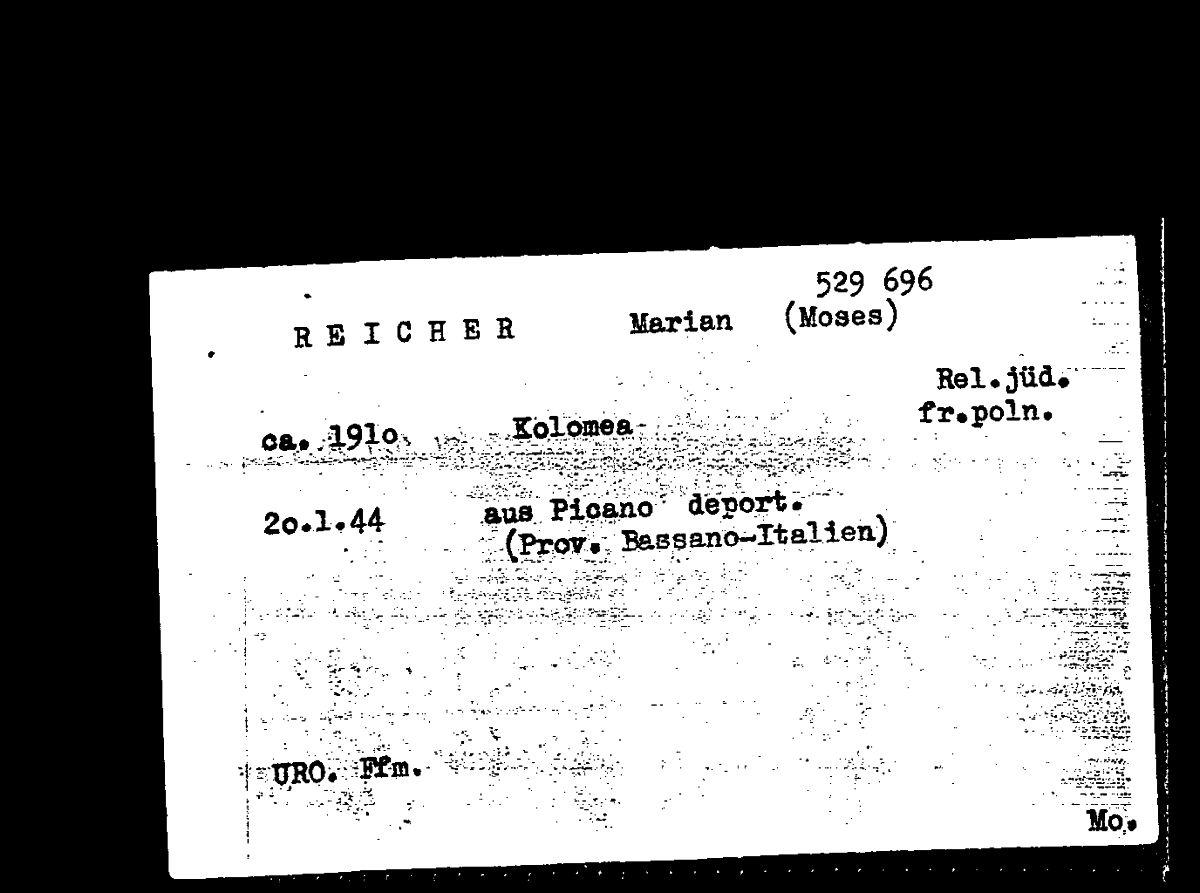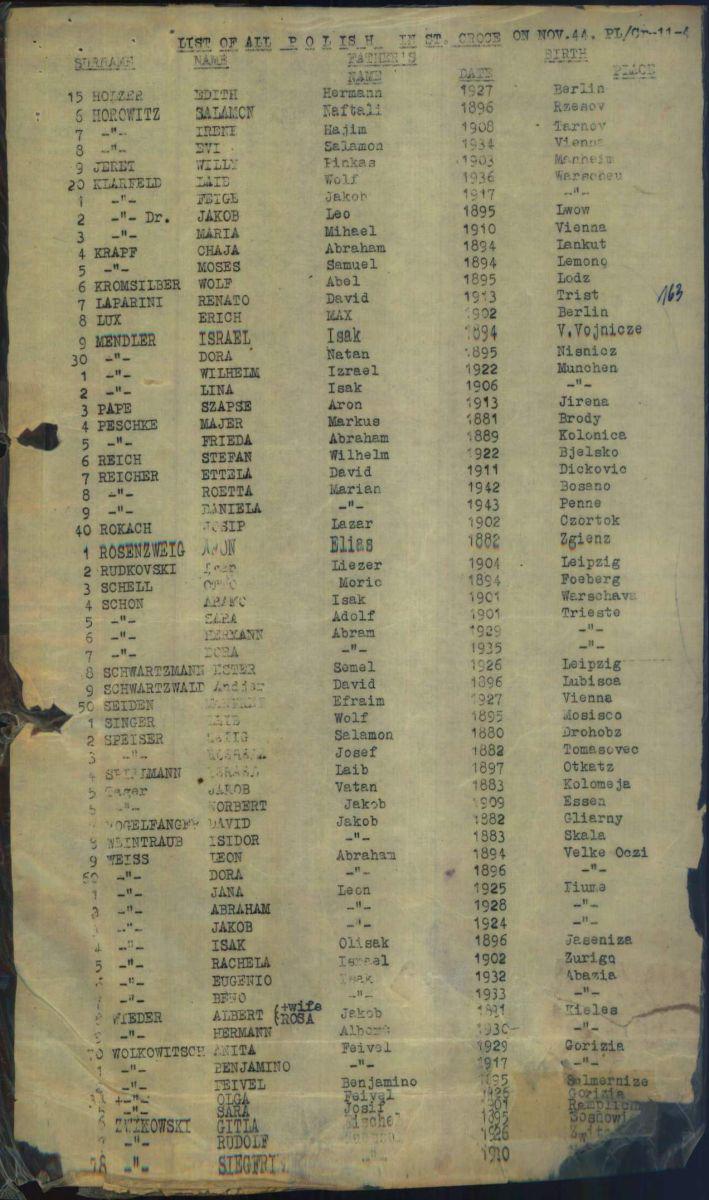


Yad Vashem Archives


Yad Vashem Archives

For more than 75 years, no one knew what had happened to Moshe Reicher. All traces of him were lost one day in 1944 when he simply vanished. Now, thanks to a comprehensive archival investigation conducted both at Yad Vashem and in Italy, Moshe's fate has finally been revealed.
Moshe Reicher was born in 1910 in Poland. He and his wife Ethel (born 1914) fled from Poland to Italy at the beginning of World War II. There they had two children, Rosetta and Daniel. Moshe who was deported to Picano in January 1944, but disappeared soon after without a trace. In 1945, Ethel and her two children immigrated to Eretz Israel. Upon arrival, Rosetta was given the Hebrew name Shoshana, and Daniel became David, after Ethel's father who was murdered in the Holocaust.
Recently, Shoshana Yosef, a cousin of Rebecca Reicher, David's wife, took part in Yad Vashem's "From Roots to Trees" course, a program that explores family history through archival research. She decided to try to find out what had happened to Moshe, but the only knowledge David had of his family was very limited – his own birthplace of Penne, Italy, where his sister was also born, and where his mother came from in Poland.
According to documentation Shoshana discovered in the Yad Vashem Archives, Ethel and Moshe's name were included on a list of Jewish detainees transferred to the Enego camp near Vicenza in northern Italy in November 1941. Shoshana (Rosetta) was born on 8 January 1942 during internment in a local hospital called Bassano del Grappa. The documents also showed that the couple left the camp in September 1943. In October of that year, David (Daniel) was born in Penne. After David's birth, the couple was seperated, and shortly thereafter Moshe disappeared.
Ethel and her children immigrated legally to Eretz Israel aboard the Princess Kathleen, which departed from the port of Taranto in southern Italy in March 1945. Ethel never spoke again about her husband or the Holocaust, and she died in 1998. Her daughter Shoshana passed away from cancer in 1990.
During Shoshana Yosef's course at Yad Vashem, she discovered that Moshe had another name, Marian, revealing a whole world of information previously unknown to the family. Documents from an Italian archive indicated that Marian Reicher was murdered in the area of Rome. Upon further investigation into Italian sources, evidence revealed that Moshe-Marian was shot in a massacre in the Fosse Ardeatine quarries on 23 March 1944. This retaliatory murder of 335 people, 75 of them Jews, followed the killing of 33 German soldiers by Italian partisans. The victims were bystanders at the time the German soldiers were killed, as well as prisoners, including Jewish inmates from the Regina Coeli prison in Rome. Following the massacre, the Germans bombed the quarry and the murdered were buried under the rubble.
In 1953, theremains of the victims were given a proper burial and a memorial was erected. Each year, the families of the victims gather at the memorial for an interfaith memorial service.
"I started to correspond with the director of the memorial website, who told me that in 2014 they collected DNA from the remains of the bodies, and that eight of the bodies remained unidentified. He suggested that David send a DNA sample and they would check to see if his DNA matched that of any of the unidentified bodies," Shoshana recalls.
David Reicher sent the kit to Italy, and at the end of April this year, one month after the seventy-sixth anniversary of the massacre and two days after the Holocaust Remembrance Day in Israel, he received word that there was indeed a match to one of the bodies.
"It is difficult to describe what an emotional moment that was. For so many years, all we knew was that one day my father left the house and never returned. All these years later, and after searching so hard and for so long, we now are able to close the circle. I am waiting to be able to go to Italy together with my family so that we can take part in the memorial service and commemorate the memory of my father complete with the knowledge of how – and where – he died," David Reicher explains.










